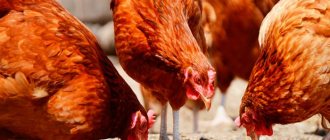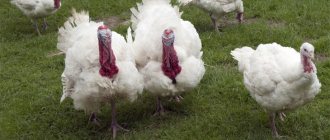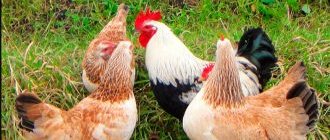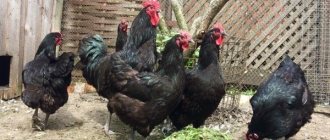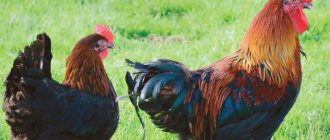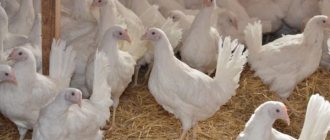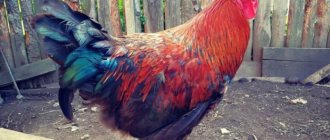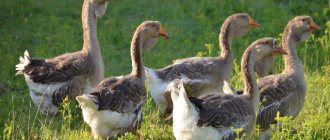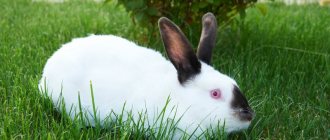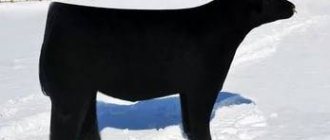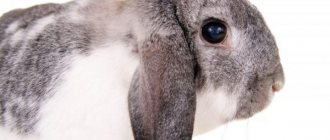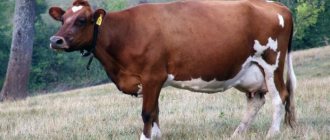Hybrid Converter is not a breed of bird, but a cross, that is, obtained by crossing lines of different breeds. Such birds have better characteristics compared to their parents, but their qualities are not inherited. Cross Hybrid is a meat breed: turkeys reach a large weight - an average of 22 kg, and quickly gain weight. The birds tolerate both heat and cold well, and are kept free-range throughout the spring, summer and autumn.
Turkey meat has excellent taste, the meat yield from 1 carcass is 85%. Egg production is low. But what else the cross-breed male is famous for is its light and soft down, which is sure to collect when the bird is slaughtered.
Advantages and disadvantages
Hybrid converters can often be found in small private households, on farms. They are in demand due to the numerous benefits of the breed.
- Large adult weight. It was recorded that the turkey reached a weight of 30 kg, but at the same time had a layer of fat.
- Rapid increase in body weight. The weight required for slaughter in a bird is reached by the 150th day of existence, however, it is recommended to slaughter crosses at 4 months.
- Unpretentiousness. A turkey can eat both dry and succulent food.
- High level of disease resistance, but only if properly maintained.
- Excellent tender taste of broiler meat.
- Decent quality down, which can be an alternative to goose down.
- Attractive commercial appearance of the carcass.
The disadvantages of broiler turkeys of this breed include low egg production. It has also been noted that when birds are bred independently, the offspring rarely retain the qualities of their parents.
How to avoid diseases
Although diseases are rare in Hybrid turkeys, preventive measures will not hurt:
- Adding vitamins and minerals to the feed.
- Maintaining appropriate conditions in the poultry house.
- Washing the house and dishes with disinfectant solutions, whitewashing with lime. These procedures are carried out in the summer, when the turkeys are on the pasture. After disinfection, you will have to ventilate the room for at least 4 days.
- Food is prepared immediately before feeding. The drinking bowl should be clean, as should the water in it.
- Daily inspection of crosses is mandatory.
Warning! If the slightest deviations in behavior are noticed, the bird is transferred to a separate room.
Otherwise, the disease will spread to other pets. Be sure to contact a veterinarian.
Productivity
Heavy crosses have high productivity, and the hybrid is no exception in this regard. During turkey slaughter, the meat yield is about 85%. A third of this volume falls on the bird's breast. An adult bird gains its body weight in 150 days; after this time, its flesh is filled with vitamins and macroelements. Turkey meat products have no allergic components, they are low in fat, but have high juiciness.
In terms of eggs, the female's productivity is approximately 80 eggs per year. With intensive nutrition, egg production can increase to 150 eggs. The average weight of one egg is 80 grams, they are characterized by the correct shape, density and smoothness of the shell. The taste of this product is excellent; they can be consumed both raw and after heat treatment. The survival rate of chicks reaches at least 85%.
Conditions of detention
The main advantage of keeping a hybrid converter cross is that, among all the heavy crosses, it easily gains weight in the summer on free range, which makes caring for the birds much easier and reduces the amount of feed. With proper arrangement of the turkey poultry and aviary for walking, the bird tolerates the winter well.
Premises requirements
For turkeys of this cross, a room is built based on the following requirements:
- The turkey house should be spacious, at the rate of 1 sq. meter of area for 2 individuals.
- The room temperature should be +17-20°C in winter.
- Lighting at least 14 hours a day. The windows are large, located on the south or southwest side.
- The floor is wooden with a bedding of straw or sawdust to prevent the bird's paws from freezing.
- The room for ammonia removal must have proper ventilation, without creating drafts.
- The perches are made of durable timber and installed at a height of 0.8 m from the floor.
Aviary for walks
A walking area is a necessary condition for the life of crosses at any time of the year. If in winter turkeys walk for several hours, then from spring until late autumn birds spend most of their time walking. Pens for walking should be spacious, based on the square of area for 1 turkey, fenced with a net with a medium-sized mesh, high, up to 2 m. Since birds can fly, it is advisable to also cover the top of the enclosure with netting. Along the perimeter of the pen, you need to plant grass that turkeys love, such as alfalfa, clover, peas and others. The aviary is set up next to the poultry house and connected to each other by a manhole, which is closed at night.
How to cope with winter cold
The hybrid converter tolerates temperature reduction better than hot weather. When the frost is at least +15°C, turkeys go for walks and their duration is about two hours. You just need to know that dampness and drafts are deadly even for such strong birds.
At this time, you need to pay more attention to the care of these birds:
- Make sure that the room temperature does not fall below +15°C.
- Extend daylight hours with lighting up to 14 hours.
- To avoid high humidity, change the sawdust or peat bedding every week, since in cold weather these materials do not absorb moisture well.
- Provide additional feeders with shells and chalk.
- The walking area must be cleared of snow to prevent paws from freezing, hay must be placed and the room must be well ventilated during this time.
What is cross
When breeding any bird, breeders and breeders settle on a certain line. From this selection, the best specimens of turkeys are selected in all respects. The most important thing is that the qualities of adult birds must be inherited by turkey poults. Lines can be within the same or different breeds. When lines are crossed, breeds are created. The same techniques were used when breeding the Heavy Cross Hybrid Converter breed.
Important! Cross-breeding is the name given to adult birds and their young.
And the breed determines the variety of turkeys that are obtained from crossing non-pedigreed birds using selection.
Advantages and disadvantages
Hybrid converters can often be found in small private households, on farms. They are in demand due to the numerous benefits of the breed.
- Large adult weight. It was recorded that the turkey reached a weight of 30 kg, but at the same time had a layer of fat.
- Rapid increase in body weight. The weight required for slaughter in a bird is reached by the 150th day of existence, however, it is recommended to slaughter crosses at 4 months.
- Unpretentiousness. A turkey can eat both dry and succulent food.
- High level of disease resistance, but only if properly maintained.
- Excellent tender taste of broiler meat.
- Decent quality down, which can be an alternative to goose down.
- Attractive commercial appearance of the carcass.
The disadvantages of broiler turkeys of this breed include low egg production. It has also been noted that when birds are bred independently, the offspring rarely retain the qualities of their parents.
Origin and characteristics of the breed
Hybrid converter – broiler hybrids. Bred by crossing 2 breeds: bronze broad-chested and Dutch white. Hybrid turkeys are intended for breeding in industrial poultry farms and private backyards. Hybrid Converter turkeys are produced by Hendrix Genetics Company, which has breeding plants in the USA, Canada, and European countries.
Canadian cross turkeys have a typical broiler body type. They have a massive, strong body with developed muscles. The legs are straight, strong, the head is small. The plumage of Hybrid Converter hybrids is white.
Breeding process
Purchasing and raising chicks
If you plan to breed turkeys on large farms and on a particularly large scale, then you cannot do without the process of incubating eggs. But for a small private farmstead it is more profitable to purchase young animals.
The selection rules when purchasing healthy chicks are as follows:
- Smooth and even plumage, dry navel, soft belly;
- The wings fit tightly to the body;
- Active mobility, stability when moving;
- Quick reaction to sounds, voices, noise.
Temperature
The chicks are placed in a well-insulated place; for week-old turkey poults, the temperature is maintained within 31-34°C. If they are already 2 weeks old, then the temperature is reduced to 24-27°C. One month old chicks feel comfortable at an air temperature of 18-20°C.
Turkeys Hybrid Converter
For maintenance, they buy or make their own from a fine mesh cage about 50 cm high. The mesh floor is covered with material, cardboard, and if it gets dirty, it is often changed.
Lighting
In the first weeks, the place of detention should be illuminated around the clock; by 6 weeks, lighting is sufficient for 8 hours.
Feeding
First, let's describe some of the feeding features of this breed:
- The food must contain mineral and vitamin supplements.
- Protein food is considered the basis of the diet of “heavyweight” turkeys.
Diet of chicks
For the first three weeks, the babies will have to be fed 7 times a day, then the number of feedings is gradually reduced, and chicks a month old are fed only 4 times. The menu includes chopped eggs, cottage cheese, special foods PK 5, PK 6. They are good to add to steamed grains of corn, buckwheat, and wheat. To speed up the growth of chicks and increase their immunity, crushed eggshells, chalk, and bone meal are introduced into the diet.
Important! Good care and well-balanced nutrition of young animals give excellent weight gain every week
Diet of adults
The basis of the diet is considered to be porridge made from wheat, oats, corn, as well as special feed. In the fall, boiled vegetables (potatoes, carrots, beets, etc.) are added to porridges and mixtures.
When creating a menu, you cannot do without adding fresh herbs (dandelion, nettle, alfalfa, peas, etc.). For the winter, the grass is dried and stored in the form of hay; for feeding, it is crushed and soaked.
Regardless of the time of year, the diet of Heavy-cross turkeys should contain vitamin supplements and microelements. The source of calcium is chalk, crushed shell rock and mountain gravel. There is a lot of valuable protein in meat and fish scraps.
Prevention and treatment of diseases
Hybrid turkeys, like the Bronze -708 breed, are susceptible to dangerous infectious diseases, such as respiratory mycoplasmosis (runny nose), histomoniasis, and tuberculosis. Sick birds have poor coordination of movements and often fall. With the onset of severe diarrhea, turkeys become hungry and lose weight. When tuberculosis occurs, specific growths appear on the skin, and the bird is destroyed. Antibiotics, vaccines Furazolidone, Osarsol and other drugs are used to treat infections.
Note! To keep all livestock healthy and unharmed before slaughter, you need to do preventive vaccinations and follow the recommendations of veterinarians, and avoid unsanitary conditions in places of detention
Diseases and prevention
Hybrid Converter turkeys are very resistant to many avian diseases. However, the risk of infection through contact with other poultry always remains. The most famous diseases are:
- colibacillosis – caused by E. coli. Infection most often occurs through consumption of food and water contaminated with feces. If sanitary standards are observed, this does not happen. The disease is cured with complex antibacterial drugs;
- coccidosis - caused by parasitic protozoa, which are characteristic of each bird. Typically, coccidiosis affects young animals from 2 to 6 weeks of age. For treatment, drugs are prescribed that suppress the vital activity of the parasite. Read about the symptoms and treatment of coccidiosis in chickens at this link.
- histomoniasis - infection occurs through food and water. Most often it affects turkey poults. Aminitrizole, tinidazole, metranidazole are used for treatment;
- mycoplasmosis - transmitted from an infected bird or through contact with its bedding and feed. Sick birds are immediately isolated and treated with antibiotics. The poultry house is disinfected.
To avoid illnesses, it is enough to follow simple recommendations:
- the food must contain a sufficient amount of minerals and vitamins;
- You should follow the rules of hygiene in the poultry house: change the litter, keep the room dry, ventilate, clean the feeders and drinkers;
- Only the freshest food is used for feeding. Uneaten food must be removed. It is necessary to monitor the purity of the water;
- While the birds are on the run, the poultry house is disinfected: the walls are covered with slaked lime, the floor, feeders, fences, etc. are disinfected. After disinfection, the poultry house must be ventilated for 4 days;
- birds should be examined every day in order to detect sick individuals in time and isolate them.
Fattening
Fattening Hybrid Converter turkeys to the weight declared by the reproducer is possible provided that high-quality feed with a balanced composition is used. Compound feed is selected taking into account the age of the bird. Young animals from 0 to 55 days are fed using starter feed containing:
- sunflower and soybean cake (9 and 32%, respectively);
- corn grains (up to 30%);
- lysine (0.003%);
- chalk, monocalcium phosphate, methionine (3.5,1.6, 0.16%, respectively);
- premix (1%);
- wheat (7%);
- fishmeal (5%);
- soy (10%).
Minor salt content is allowed (0.14%). Balanced feed allows for growth potential. Due to the small size of the granules, turkey poults eat it easily. In addition to the feed, the chicks are given cottage cheese (4-5 g), boiled eggs, chopped greens (nettle, dandelion, garlic and onion), low-fat kefir or milk, porridge steamed with milk.
In the first days, young animals are fed a solution containing ascorbic acid (2 g) and glucose (150 g) per 10 liters.
The frequency of feeding is 7-8 times a day (until the turkey reaches a weight of 200-250 g). In the first 4 days, the food is placed at eye level of the turkey poults - they still have poor vision.
From day 56, turkey poults can be switched to finishing feeds that have a richer composition. To corn grains (30%) and wheat (20%) add:
- peas (5%);
- yeast (no more than 4%);
- meat and bone meal (2%), fish (2%), alfalfa (5%);
- chalk and shells (3%);
- sunflower meal and wheat bran (5% each);
- salt (no more than 0.5%);
- barley (15%).
A vitamin-mineral complex, as well as enzymes, are added to the finished feed. Additionally, the bird is given greens (in spring and summer), steamed buckwheat, grain porridge, and a small amount of dairy products. In winter, instead of fresh greens, the diet includes pureed fresh or boiled vegetables, ground chestnuts, fir, pine, and spruce needles (a source of vitamin C), nuts, acorns, and a small amount of lard (fat is necessary to increase the juiciness of meat).
At any age, you need to provide your bird with access to clean, fresh water. Drinkers should be installed not only in the turkey poultry, but also in the aviary. In summer, adult turkeys are fed in small portions 4-5 times a day, in winter the frequency of feedings is reduced to 3. The main calorie content in the cold season comes from the evening meal - this reduces the risk that the bird will freeze at night, since digestion releases energy that provides a warming effect .
The rate of feed consumption depends on the age of the turkey. In the 1st week, 10-15 g of complete feed per day is consumed per head. The weight of turkey poults is about 170 g. By the 5th week, the norm increases to 90 g (body weight of females - 1.75 kg, males - 1.95 kg), by the 10th - to 220 g (weight 5.94 and 7.37 kg, respectively), by the 15th - up to 290 g (indicators for turkeys and turkeys - 10.16 and 14.5 kg).
Varieties
It should be said that by the phrase “broiler turkeys” it should be understood that not just one specific breed of bird is represented here. There are several of them, and they all have in common the ability to quickly grow. This includes the following turkey breeds:
- hybrid converter;
- Big 6;
- Canadian broad-breasted;
- hidon.
Now let's tell you a little more about each of the mentioned turkey breeds.
Hybrid converter
The Hybrid Converter is a peaceful breed that looks quite heavy in appearance. Already at 22 weeks, an individual of this breed will reach a weight of 25 kilograms and will be ready for slaughter. Of course, it is possible to make the individual gain more weight, but, according to most farmers, this is no longer very profitable from a financial point of view. This breed is also called Indian ostriches due to the fact that turkeys can run fast. By nature, birds of this breed are friendly and non-conflicting. They behave calmly and are well trained. Converter meat is an important element of baby food, because it contains a complex of microelements and vitamins. In particular, it contains all group B, selenium and a large amount of protein.
If we talk about the external signs that distinguish this breed, we should name the following:
- small head and enlarged chest;
- large beak with a red or scarlet growth;
- predominantly white plumage.
Canadian broad chested
Canadian broad-breasted turkeys are among the fastest growing and are ready for slaughter as early as 6 weeks, when the bird's weight reaches 5 kilograms. The most intensive growth is observed until the third month of life, after which the rate of weight gain decreases. For these reasons, birds rarely live more than 15 weeks.
This breed of turkeys has excellent disease resistance and good health. It easily tolerates low temperatures, and a high percentage of fertilization is observed. Usually the plumage of such birds is black, with a bronze tint.
An important feature of the breed is that the maternal instinct in females is poorly developed, which is why an incubator is needed to breed offspring
Big 6
Another breed of broiler is BIG-6. It is considered interesting from the point of view of rapid weight gain. In 4 months of life, an individual can “grow” up to 20 kilograms
According to poultry farmers, it is better to choose individuals with white feathers, since such birds have more delicate skin and better color, which will be important for the attractiveness of the carcass and increasing consumer demand. Real birds of this breed have a small black spot in the chest area, which is a peculiar feature of the breed
Despite the ability to lay eggs with a high fertilization rate, there are no guarantees what the offspring will be like, or whether the chicks will even look like their parents. The advantage of this breed is also its rapid growth and unpretentiousness in what they eat. Big-6 is grown both at home and in poultry farms. If we talk about appearance, then such birds are distinguished by shiny outer feathers, thick down, large wings that allow turkeys to fly, a convex and fairly developed chest, powerful muscular legs, and a small head.
Hidon
The chidon variety came to us from the Netherlands. These turkeys are also distinguished by such rapid weight gain that by the 30th week from the moment of birth they are ready for slaughter. The breed has extremely high meat productivity. Adults can reach a weight of 20 kilograms if we are talking about males. Females - up to 10 kilograms. The meat of these turkeys is extremely tender and dietary. The eggs of this breed are also very useful; the female can lay from 90 to 110 in one calendar year.
Description of the breed
In comparison with representatives of the famous Big-6 cross, hybrids are more profitable in terms of meat productivity, because they are usually 4–5 kg heavier than their relatives, even if they take a little longer to feed. They also have other advantages.
External characteristics
In addition to its productive qualities, representatives of this breed can boast of being highly decorative, thanks to which they can easily become a real decoration for any farmstead. To verify this, just evaluate their exterior:
| Part of the body | Description |
| Head | Small, with clear outlines |
| Crest | Recumbent, very weakly expressed in females |
| Beak | Powerful, slightly curved down, has a bright red growth that resembles an earring |
| Rib cage | Wide, muscular |
| Wings | Females are more close to the body and do not have very long flight feathers, which cannot be said about males. |
| Tail | In females it is small, often folded and drooping downwards. In males, it is raised upward and, when fluffed, resembles a large fluffy ball (the tail plumage of males is better developed) |
| Paws | Massive and strong, males are slightly wider apart than females |
| Plumage and color | Lush (especially in males), predominantly white, but there may be a dark spot in the chest area |
Dimensions and weight
Hybrid converter turkeys are large birds whose weight can reach 25 kg. Of course, turkeys are slightly smaller than males, but with good care they can grow up to 12–13 kg. The meat yield is about 85% of live weight, with 30% of this value coming from the chest area.
To calculate how much a bird will weigh in adulthood and estimate the approximate weight gain by month, you can focus on the average weekly weight gain, calculated using the following growth table:
| Age (in weeks) | Male live weight (in kg) | Live weight of the female (in kg) |
| 1 | 0,16 | 0,15 |
| 2 | 0,40 | 0,40 |
| 3 | 0,74 | 0,71 |
| 4 | 1,28 | 1,16 |
| 5 | 1,95 | 1,70 |
| 6 | 2,79 | 2,36 |
| 7 | 3,76 | 3,16 |
| 8 | 4,84 | 4,05 |
| 9 | 6,04 | 4,98 |
| 10 | 7,37 | 5,94 |
| 11 | 8,75 | 6,88 |
| 12 | 10,12 | 7,8 |
| 13 | 11,55 | 8,66 |
| 14 | 13,05 | 9,45 |
| 15 | 14,5 | 10,16 |
| 16 | 15,99 | 10,82 |
| 17 | 17,4 | 11,4 |
| 18 | 18,7 | 11,91 |
| 19 | 19,91 | 12,37 |
| 20 | 21,09 | 12,75 |
| 21 | 22,20 | — |
| 22 | 23,25 | — |
As can be seen from the table, after the twentieth week of life, turkeys stop actively gaining weight. Of course, they can still add a few tens of grams, but this will not change the overall picture, and if there is no need to receive the small number of eggs that they are capable of producing, the bird can be slaughtered.
Important! Intensive feeding and rapid weight gain indicate obesity in birds, which negatively affects not only their well-being, but also the taste characteristics of meat products.
Productive qualities
It is appropriate to breed hybrids for meat, but many farmers also manage to get a certain number of eggs from them. Of course, in each case, egg production and meat productivity will be different, but when choosing turkeys you should still focus on average values.
Egg production
Turkeys reach maximum productivity in this regard only in the winter-spring period, while in the summer they practically do not lay eggs. Therefore, from one individual per year it is possible to obtain only 50–80 oval eggs, weighing 80–90 g each.
In rare cases, under good housing conditions, one female can lay up to a hundred light-colored eggs interspersed. The taste characteristics of such products are not inferior to chicken, so they can be used for a variety of culinary purposes.
Meat value
With proper nutrition and good living conditions, hybrid converter turkeys quickly gain the required weight and are ready for slaughter at the age of 5–6 months (some females even earlier). Further fattening is unprofitable, because already in six months the share of pure meat products is 80–85% of the live weight of the bird.
Did you know? According to modern research, the DNA of the turkey almost completely coincides with the DNA of the Triceratops, which, according to preliminary calculations by scientists, lived on our planet 65 million years ago.
Character
Hybrids get along well with representatives of their own breed even in a limited area, but they can enter into conflicts with other farm birds (this is especially true for turkeys of other breeds). You should not risk the moral and physical health of the inhabitants of the farmstead; it is better to immediately move the turkeys into a separate enclosure.
Advantages and disadvantages
- The advantages of breeding hybrids include:
- precocity of young animals;
- heavy weight;
- economical consumption of feed mixtures;
- albeit a small but stable production of tasty eggs at certain times of the year.
- Among the disadvantages of keeping birds are:
- the need to support the body’s defenses (in order for the birds not to get sick, preventive requirements will have to be strictly observed, and this applies not only to the correct choice of feed and cleanliness in the poultry house, but also to timely vaccination of the livestock);
- high demands on feed (to quickly gain the desired weight, you will have to use only high-quality industrial feed);
- the need for a separate territory for keeping, which is explained by the bad nature of hybrids in relation to other farm birds.
Turkey Hybrid converter - care
- Turkeys require a dry, warm, draft-free environment.
- There should be no more than 2 birds per 1 square meter.
- The temperature in the poultry house is maintained at +18-20C degrees, and the room is regularly ventilated.
- It is recommended to place windows in the poultry house on the south side so that the room is well lit.
- Turkeys are given a pen for walking, which is sown with peas, vetch, alfalfa, clover and other grass.
They are fed corn, wheat, oats and barley. They also enjoy eating green food, such as nettles or dandelions.
In the summer, crosses require a lot of greenery, for this it is better to release them onto pastures. And to gain weight, birds are given supplements with minerals and vitamins in their feed.
Turkey chicks are given buckwheat and dairy products, and eggshells and chalk are also added for growth and development.
In order for breeding Hybrid turkeys to bring maximum profit, you should adhere to the following tips:
- include minerals and proteins in the diet,
- give medicines to prevent intestinal diseases,
- perform slaughter at the age of 4 months with a bird weight of 7 kg,
- purchase chicks only from reliable suppliers.
With proper care, the meat of cooked birds is juicy, soft and healthy.
Are there any peculiarities in keeping Hybrid turkeys in winter?
Maintenance in winter
Turkeys tolerate low temperatures well, but are very afraid of dampness and drafts.
In winter, it is necessary to carefully monitor the absence of high humidity in the poultry house. It is important to use sawdust, straw or peat bedding. Straw, which absorbs moisture well, is changed every ten days, and peat and sawdust every three weeks. If the room has windows, you can refuse additional lighting for young individuals.
If there are no windows, it is necessary to additionally turn on the lights for several hours. Adult turkeys require 14 hours of daylight. In winter, turkeys spend more energy, so the winter diet includes not only grain and greens, but also wet mash, feed, wheat, barley, corn, rich in carbohydrates and fiber. Birds also need succulent food from vegetables, acorns and chestnuts. Thanks to green feed and pine needles, it will be possible to replenish the need for vitamins.
Since in the winter season the flock spends almost all their time in the poultry house, they are given baths with sand and ash to prevent the appearance of parasites in their feathers. Chalk and shell are poured into a separate container.
In the cold season, walks outside should last about 2 hours, unless there is severe cold. Outside, snow is removed in advance to prevent the turkeys from getting cold feet.
Who to choose Big 6 or Hybrid converter - comparison
The hybrid converter is similar in its characteristics to the Big 6 breed.
Comparative characteristics table
| Hybrid converter | Big 6 | |
| Place of withdrawal | Canada | England |
| Weight | Males from 22 kg, females from 9 kg | Males from 26 kg, females from 11 kg |
| Egg production | 50 pcs | 105 pcs |
| Slaughter time | On day 150 | On day 100 |
Both breeds of turkeys are popular among Russian farmers. As we can see from the table, Big 6 turkeys are slightly ahead of the Hybrid in everything and are more profitable to keep, and are also distinguished by greater egg production. The living conditions are similar, so if you choose any of these breeds, you won’t go wrong.
Hatching egg Hybrid Converter - where to buy
For incubating Hybrid Converter turkeys, eggs of the correct shape, with a strong, intact shell without growths and roughness, are suitable. The color of the shell is not decisive; there may be small inclusions.
It is recommended to conduct a thorough ovoscopic examination to internally assess the condition of the yolk, white and shell.
Let us remind you that the yolk should be located in the center and smoothly transition into the white, and the white should be transparent with slightly greenish dense layers. As you turn the egg, the yolk moves slowly away from the center and then back down.
The condition of the air chamber is also assessed; it is located at the blunt end. The size of fresh eggs is about the size of a 15-kopeck coin.
The sale of hatching eggs, as well as chicks and adult turkeys of this breed is carried out by private companies, as well as farmsteads and farms.
So, they offer to buy an egg:
Hatching eggs are also supplied from Canada, Hungary, Poland and France.
For transportation, special transport is used, which maintains the required temperature conditions. Most companies offer delivery of eggs throughout Russia.
Advantages and disadvantages
Hybrid converters can often be found in small private households, on farms. They are in demand due to the numerous benefits of the breed.
- Large adult weight. It was recorded that the turkey reached a weight of 30 kg, but at the same time had a layer of fat.
- Rapid increase in body weight. The weight required for slaughter in a bird is reached by the 150th day of existence, however, it is recommended to slaughter crosses at 4 months.
- Unpretentiousness. A turkey can eat both dry and succulent food.
- High level of disease resistance, but only if properly maintained.
- Excellent tender taste of broiler meat.
- Decent quality down, which can be an alternative to goose down.
- Attractive commercial appearance of the carcass.
The disadvantages of broiler turkeys of this breed include low egg production. It has also been noted that when birds are bred independently, the offspring rarely retain the qualities of their parents.
How to breed the hybrid breed at home
Since this is a cross and not a breed, breeding at home from your own stock will not allow you to obtain pure hybrid converters. With each generation, the offspring will increasingly lose characteristic features, such as large weight gain. Therefore, it does not make sense to receive eggs from your turkeys and put them in an incubator.
You will have to either buy young animals and raise them, and then purchase new ones, or buy incubation material and get turkey poults from it. You need to buy broiler turkey poults from breeding poultry farms that guarantee the purity of the cross.
Description and advantages of Hybrid turkeys
Positive characteristics of a hybrid bird breed include:
Quite wide sternum, powerfully developed; Large red beak. A distinctive feature is drop-shaped growths on the beak; The bird's head is small in size; The plumage is white. It is especially interesting to watch turkeys during the breeding season. The male, in order to attract females ready to mate, spreads his tail feathers. There really is something to see during this period. The most noticeable and striking males deserve privilege over turkeys. The body is muscular, the bird is mobile, moves quickly; The down of Hybrid turkeys is highly valued. It is incredibly light and soft. Feathers are readily purchased from farmers by clothing factories and the textile industry. The feather has high thermal insulation properties and durability. Birds of this breed are often called Indo-ostriches. They have rightly earned their nickname. Adult turkeys develop speeds of up to forty-five kilometers during hour-long races. The natural ability to perform high jumps is also impressive. A Converter turkey can easily jump over a two-meter fence. The breed’s extremely high egg production rate turns out to be beneficial for the farmer.
If you pay attention to the balance of the bird’s diet, then in a month a turkey hybrid converter can lay about fifty large eggs.
- Indo-ostriches, as the breed is often called, have perfectly adapted to the harsh climate of Russia. They are often grown on farms in Eastern Siberia and the Far East.
- Compared to other turkeys, the breed has a calmer character for the better. Females can hatch not only their chicks, but also foundlings. Often chicks are dropped off by geese and chickens living on the farm. It is noteworthy that turkeys get along very poorly with other birds. It is not recommended to walk them with other birds. Enclosures should be built separately.
- Hybrid converters are practically not susceptible to various kinds of infectious diseases and viruses. Of course, subject to comfortable maintenance and compliance with hygiene standards.
- Caring for birds is quite simple; even a farmer with a basic level of knowledge and skills in keeping birds can handle it. The main thing is to ensure a spacious house, cleanliness of maintenance, a balanced diet and timely administration of the necessary vaccines.
- And in conclusion, it is worth noting the final advantage of the breed - its impressive body weight. Males of this species weigh on average about twenty-two kilograms, and females from ten to twelve. Feeding during the process of weight gain is a decisive factor; the bird gains body weight quite quickly relative to other breeds.
